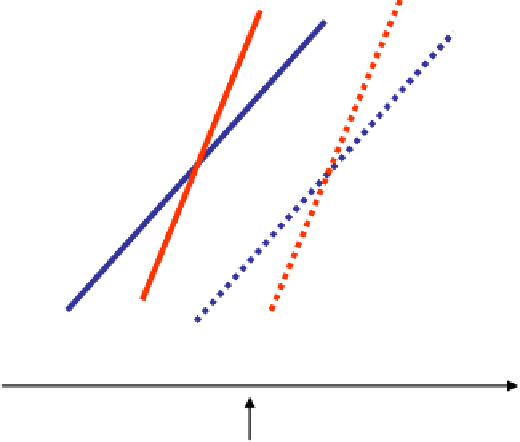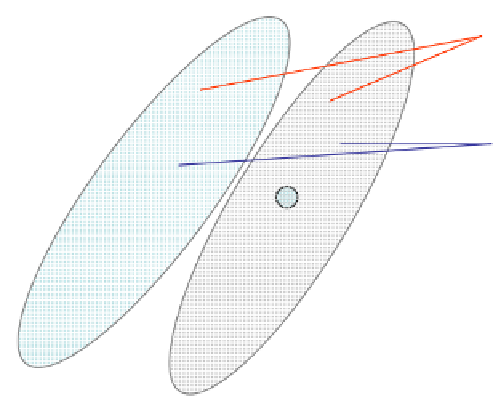Information Technology Reference
In-Depth Information
the realization of high quality video applications with 4:4:4 format will be attained
since the cross-over point is achieved to shift to a lower rate by the development of a
new video coding technology with higher coding performance[22].
Performance
improvement
Quality
HQ source
(4:2:2, 4:4:4)
AFTER
AVC/H.264
YUV4:2:0
BEFORE
AVC/H.264
Rate
Application operating point
Fig. 45
Recent Progress of Video Coding Technology on Rate-Distortion Characteristic
[13]
Moreover, most of video cameras and displays can treat RGB signal directly
now. Then, if RGB and 4:4:4 formats are treated directly also in video coding, the
degradation of the quality by means of color conversion does not occur and high
quality video can be consistently provided.
4.1.2 The Amount of Information of UHD Video
Realizing new video expression which fulfills the requirements of UHD video is
simultaneously accompanied with the steep increase of the amount of information.
For example, the uncompressed rate of HD video (1920x1080/8bpp/4:2:0/30fps) is
around 1 Gbit/s. This uncompressed rate increases to 3 to 18 Gbit/s for 4K video
(3840x2160/8-12bpp/YUV4:2:0-4:4:4/30-60fps) and 12 to 72 Gbit/s for 8K video
(7680x4320/8-12bpp/YUV4:2:0-4:4:4/30 - 60fps). Even if compared by the same
bit length (8bpp), video format (4:2:2) and frame rate (30fps), 4K video has
around four times more information and 8K has about 16 times more information
than HD. With exponential increase of video data band width, the transmission





